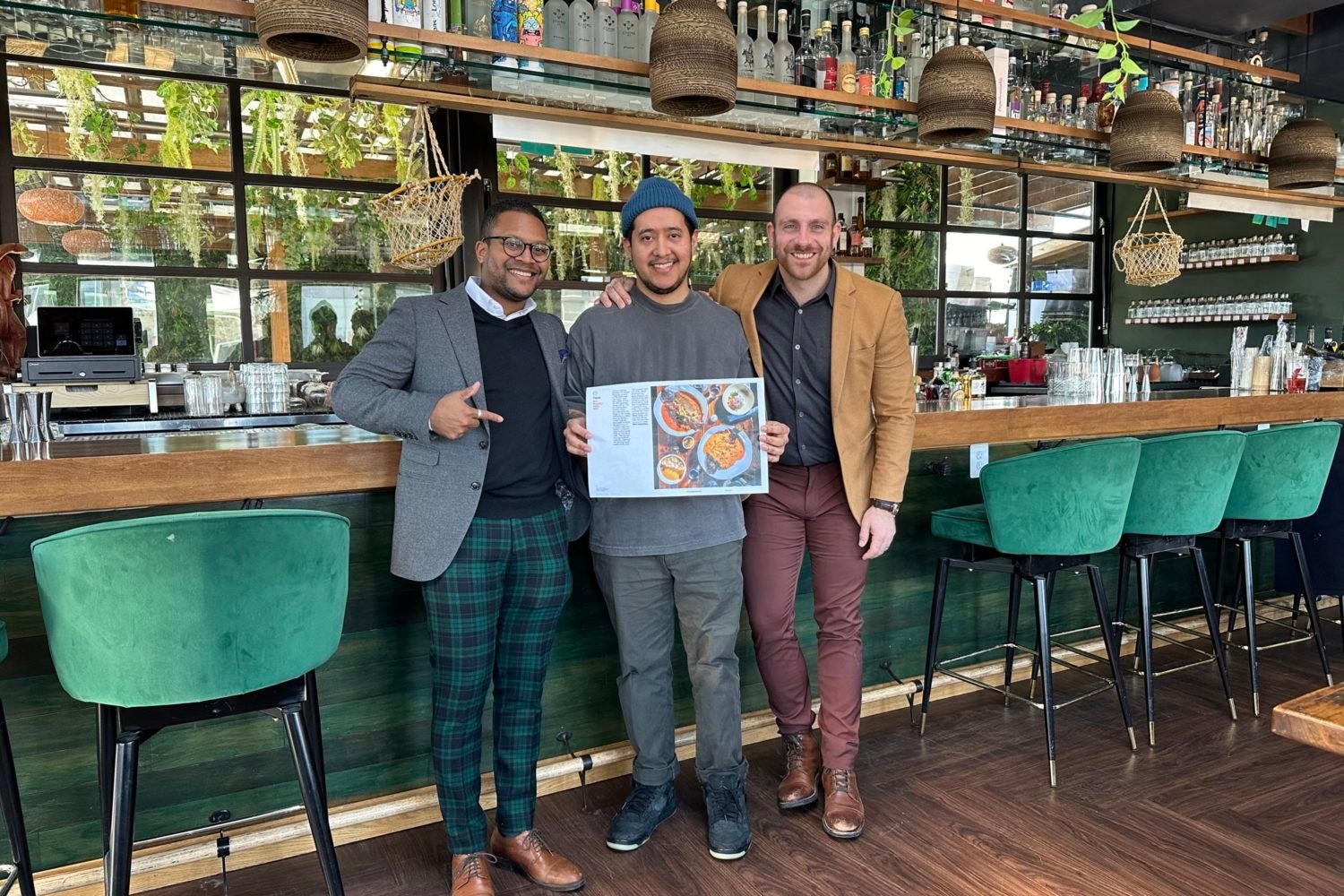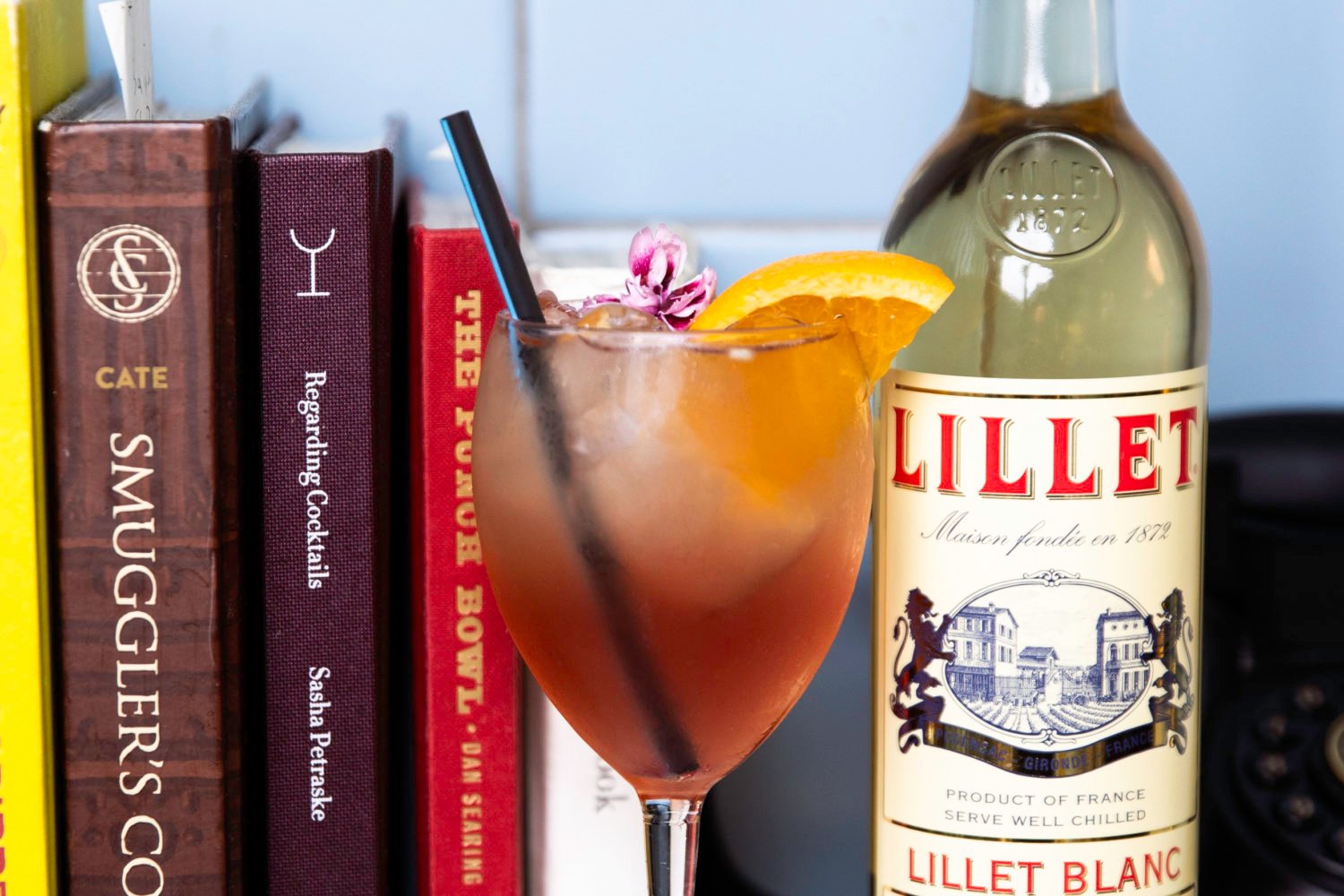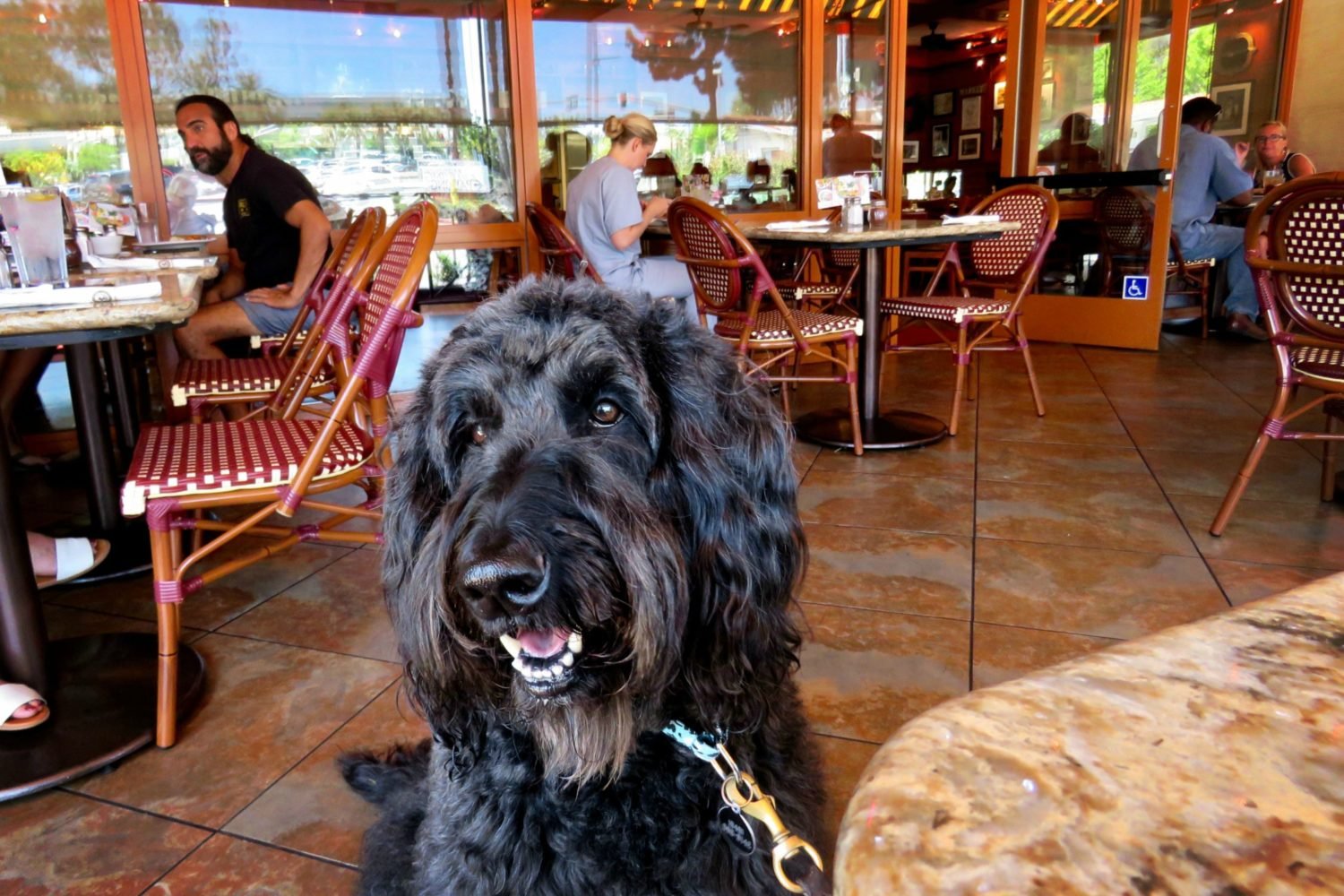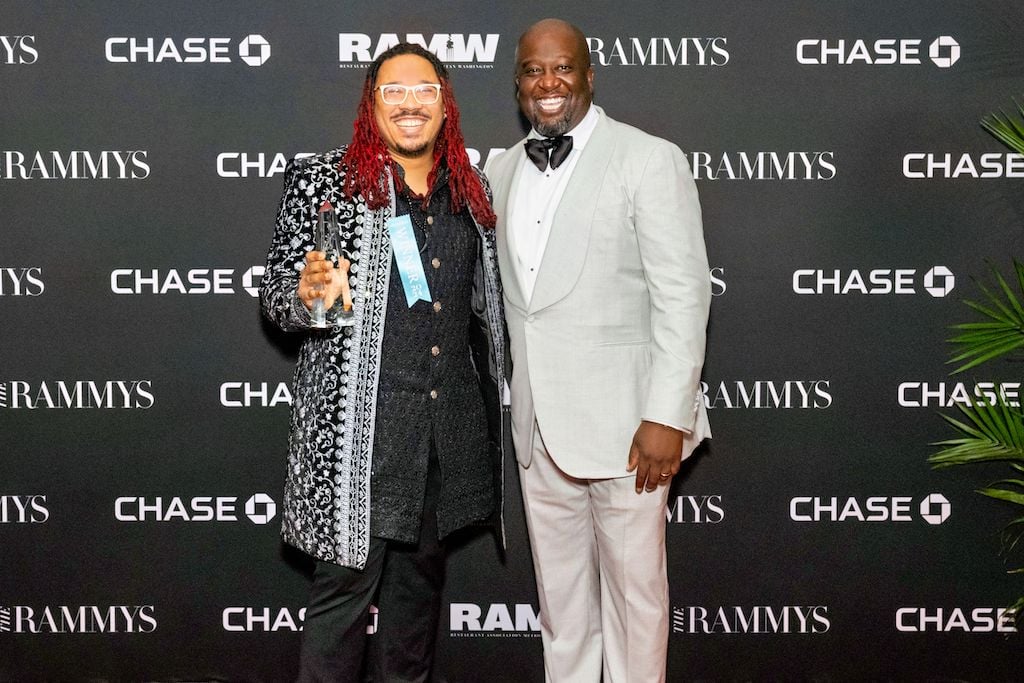Hearing that I’d dined at Fiola, the restaurant marking the return of wunderkind chef Fabio Trabocchi to DC after a four-year stint in New York City, a tableful of friends leaned forward at dinner and asked, “So?”
They weren’t asking whether the restaurant was good—goodness was presumed. They were looking for details to savor.
That Fiola could be anything less than a triumphant “yes” was an impossibility, such was Trabocchi’s genius in piloting the four-star Maestro, at the Ritz-Carlton Tysons Corner, to the pinnacle of the local dining scene.
But the answer, alas, is not a triumphant “yes.” It’s a “yes, but.”
Fiola is good. It could be better.
The last we saw of Trabocchi, the chef was presiding over his open kitchen in Tysons, whispering commands to his cooks via a headset and reminding patrons by his example that dinner at the highest level is a command performance. The dining room reinforced the air of seriousness, a hushed stage that added to the allure of the chef’s dishes. Italian cooking, so often a straightforward dining experience even at the highest levels, had been elevated to something exalted in Trabocchi’s tasting menus, which diners and critics judged worthy of the caloric and financial splurge.
Chefs are proud to report that their pastas are handmade, but Trabocchi’s seemed not to come from the hand at all; they seemed divinely sent. One of his most inspired creations was a turbot smoked in hay. Hay! The stuff of farms and barns at a place where a waiter came around to de-crumb your table every 20 minutes. And yet from that most earthbound of products he concocted something sublime, one of the most perfect preparations of fish I’ve ever eaten.
Seeing a test tube arrive alongside a course of veal one night, I assumed Trabocchi had been unable to resist the temptation to tinker at the expense of the diner. The soulfulness of the sauce within it said otherwise. The chef was making a point about innovation and tradition—that they go hand in hand, that innovation is best appreciated and understood in the context of tradition.
Trabocchi left Maestro in 2007 for SoHo in New York City, opening Fiamma at the behest of Manhattan impresario Steve Hanson. Gone were the headsets, the sacramental air. Fiamma meant to combine the vaguely louche atmosphere of an exclusive downtown nightclub with the indulgences of a four-star restaurant. Trabocchi reconfigured his cuisine, rusticating it to emphasize its accessibility and honesty. New Yorkers, inundated with great Italian cooking and jaded by so much quality and variety, were in awe. Or maybe it was love. Frank Bruni of the New York Times awarded Fiamma three stars. Adoring blog posts followed.
But Fiamma was a casualty of the crash of ’08, and after a stint at the Four Seasons in Manhattan, Trabocchi began plotting his return to DC.
His new restaurant finds him moving further away from the grandiosity that launched his career. The name, for starters. “Fiola” is a term of endearment akin to “sweetheart,” the chef says. In other words, quite different from the ostentatious “maestro.” These are leaner days. Diners want more (more on the plate, more warmth, more heart) and less (less in the way of frills, less pomp).
Trabocchi clearly has been taking the temperature of the city. The kitchen this time is not a showpiece open for viewing. It’s framed by a massive stone wall, with two large, arched windows decorated with pots of herbs. You half expect to see a grizzled Italian grandmother peering out, not the countenance of one of the greatest chefs ever to man a stove in Washington.
The menus come in leather binders that smell like the inside of an expensive Italian sportscar, but the printing is done on computer, and patchily at that. Waiters sport tailored burgundy shirts and wide pink ties, both from Italy, but when it comes time to clear the table, they wipe it with a folded napkin, not a steel crumber. There are bottles that cost three figures but only one that costs four, and many (including many good ones) can be had for $50 to $60. Trabocchi has opted for techno music—soft techno—over worshipful silence.
Nowhere is the new ethos more in evidence than in the food. Portion sizes owe more to Olive Garden than to Maestro, with jewel-like presentations ditched in favor of a heartier, family-style abbondanza. For the most part, subtlety has been dispensed with, too.
Not that this is necessarily a bad thing. It just isn’t a thing we look to a chef with such obvious gifts to produce.
All the earmarks of the new approach are in evidence in the chef’s spin on vitello tonnato. A prettier and tastier version of a cold-cut platter, the appetizer presents a dozen roll-ups of thin, pink-centered slices of veal ringing a pile of arugula, with a creamy, gently pungent tuna sauce at the base of the plate to dip them through.
One night’s crostini plate seemed the culinary equivalent of a pop star rapping—a conspicuous demonstration of a heretofore unseen street ethic. Three thick filets of red mullet sat atop three thick rounds of toast looking more like open-faced sandwiches than hors d’oeuvres, parsley-lemon sauce flowing down the sides like ketchup oozing from a burger. Who’d have thought something as dainty as crostini could be turned into a brawny, five-napkin experience?
A plate of prosciutto, product of the Richmond purveyor Olli Salumeria, is as abundant—the pile of thin-sliced meat is intended to be shared by two or three—as it is flavorful: The nutty, rich taste invites comparison to the famed jamón Ibérico.
In contrast, a plate of four Sunset Beach oysters looks positively stinting. The oysters are dabbed with a lemon foam that frames the clean, bright flavors, then dissolves, ceding the stage to the sweet, briny stars—a brilliant, delicate effect that recalls the Trabocchi of old.
It also suggests the sort of delicacy and artistry we’re missing out on in the chef’s return.
The pastas suggest this even more.
I kept waiting for ethereality, for the moment when an exquisitely dressed dish of bucatini revealed itself as something light, nearly not there. I’m still waiting.
I don’t think it’s possible for Trabocchi to put out a mediocre dish of pasta. But if the chef is incapable of succumbing to mediocrity, he’s not incapable of falling prey to pretty-goodness.
The most remarkable thing about a plate of tagliatelle with mushrooms was how unremarkable it was for a dish that could otherwise be described as “good.” That and a latent butteriness—butter and cream are both shortcuts to creating depth—that emerged after the dish had cooled.
A plate of chitarra with sea urchin and crabmeat promised the gradual revelation of sensation Trabocchi was known for: now a cool wash of creamy sea urchin, now a hit of sweet, musky crab, now pungent garlic. Instead, the flavors seemed to function as a single unit—hearty, zesty sauce, as if the ingredients had been whipped together before being poured over the pasta.
At Maestro, Trabocchi’s aesthetic of sumptuous simplicity found expression in a dish of lobster ravioli, tiny bundles of lobster-stuffed pasta and claw meat set amid a foaming, vermilion-colored sauce made from the juice of crushed lobster shells and a pinch of ginger. (Foams are to Trabocchi what razor edges are to Michel Richard—ways of signaling his singularity.) The current dish harks back to the glory days, though the preparation is more comforting than exquisite—no small problem when
the price tag is $30.
The surprise among the pastas? The ideal that elsewhere eludes Trabocchi—of an elegant rusticity, of straightforward dishes that conceal tiny surprises—is found in a lasagna. The dish is a showcase of earthy flavors—mushrooms, lamb, and truffles—and its intensity seems to mount as you eat. No two bites are the same. The lingering impression is of foie gras, though not a smidgen of the goose-liver delicacy is present. Its intensity, its richness, challenges us to look anew at a potluck staple.
An equally simple dish—a square of grilled black bass and grilled calamari, with a pot of tomato broth and clams providing a thick, spoon-it-yourself sauce—achieves a similar effect. This is a fish dish for fish lovers, being all about the fish as fish as opposed to the fish as meat or inoffensive protein; the clams in the sauce intensify its marine character. You tuck into it as you tuck into a hearty fish stew, only in this case a fish stew engineered to satisfy the needs not of a trencherman after a day working at the dock but of a high-end restaurant-goer after a drink and an appetizer.
I’ve generally found Trabocchi’s treatments of fish more rewarding than his treatments of meat, possibly a reflection of his upbringing in Le Marche, near the eastern seaboard of northern Italy. The exception here is the grilled lamb for two. Trabocchi’s aim is so rustic as to be primal: an entire baby lamb swabbed in olive oil, oregano, and coarse salt and grilled slowly over an open flame until a dark crust forms. The meat, cut into thick slices, beckons with its juicy pinkness.
I never left Fiola unsatisfied.
But no meal was the seamless experience I had come to expect at Maestro, where each course was a miniature journey. And I found myself wondering whether the magic of Maestro was a remnant of a long-ago age, of lavish spending and fin-de-siècle decadence, or whether Trabocchi, in making his cuisine more accessible, has neglected the subtleties and delicacies by which he made his name.
Or both.
The first night I visited, it was the comparatively unknown pastry chef Jason Gehring, and not Trabocchi, whom my wife and I were buzzing about on the way out. The ricotta bombolini—round, golf-ball-size doughnuts (fried bread stuffed with cheese) were so ridiculously light I’d have believed it if someone told me they’d never been dunked in oil. An extravagantly creamy zuppa inglese was countered by a bracing scoop of lemon granita and sprigs of fresh mint—the ice-cream sundae reinterpreted for fine dining. A tiny tray of petits fours was perfect. But dessert never again reached that degree of sublimity.
Nor did Fiola, for all its obvious strengths, ever settle into an identity.
Is it a place of rustic simplicity that charges a lot simply because its chef comes with such pedigree? Is it a place that means to blend refinement and rootedness but just hasn’t been able to? Or does it aim to gesture in both directions, as if it were possible to be both things at the same time?
Does it just need more time to find itself?
Fiola is already the best Italian restaurant in the area, but something tells me Trabocchi didn’t return to the city of his greatest triumph to rule a genre.
The journey for Trabocchi and company might be long, but the path is clear. More refinement or more rusticity. Pick a direction and stick with it.
This article appears in the July 2011 issue of The Washingtonian.

















